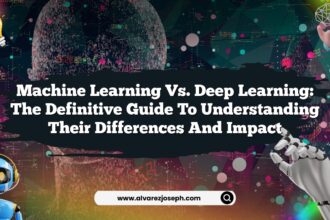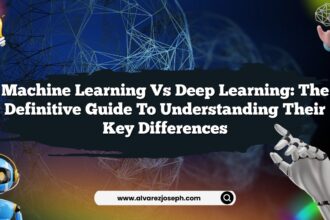Imagine a world where machines understand our voices just as easily as a friend sitting across the table. That’s no longer a futuristic fantasy but a reality that’s unfolding right before our eyes. Machine learning for speech recognition is reshaping the way we communicate with technology, making interactions more seamless and natural. Yet, despite its ubiquitous presence in our daily lives, there’s still a lot more to unpack. So, pull up a chair, grab your favorite beverage, and let’s delve into the nuances of this transformative technology.
The Evolution of Speech Recognition Technology: From Sci-Fi to Everyday Life
Speech recognition technology has come a long way since its portrayal in sci-fi movies. Remember those scenes where characters would talk to computers, and the machines would respond with almost human-like understanding? Well, that’s no longer just Hollywood magic. Early developments in speech recognition can be traced back to the 1950s, with systems like IBM’s "Shoebox," which could recognize a limited set of numbers and arithmetic commands. Fast forward to today, and we have voice-activated virtual assistants like Amazon’s Alexa and Apple’s Siri, who not only recognize but also comprehend and respond to complex queries.
The evolution has been nothing short of miraculous, yet, how did we get here? The answer lies in the ever-improving algorithms of machine learning. By analyzing patterns in speech and learning from vast datasets, these systems can now achieve an impressive degree of accuracy and flexibility, a feat unimaginable a few decades ago. But, of course, the journey doesn’t stop here. The potential for future advancements is immense, and the best is yet to come. So, what’s driving this revolution, and how can it be harnessed for even greater communication breakthroughs?
Key Techniques in Machine Learning for Speech Recognition
To understand how speech recognition systems work, it’s crucial to delve into the techniques that make them tick. At the heart of these systems are algorithms designed to mimic the human brain’s ability to process sounds and language. Here are some of the essential techniques:
Acoustic Modeling: The Sound of Success
Acoustic modeling is akin to teaching a machine how to "hear". It involves creating a statistical representation of the sounds of spoken language. By converting audio into digital signals, acoustic models help recognize different speech patterns, which is a crucial first step in understanding spoken words.
Language Modeling: Making Sense of Words
Language models predict the likelihood of a sequence of words, helping systems understand context and grammar. Through natural language processing (NLP), these models enable machines to grasp the nuances of human speech, including accents, slang, and even sarcasm. They’re the reason why your virtual assistant can understand you even when you mumble or use regional dialects.
Deep Learning: The Brain Behind the Operation
Deep learning, a subset of machine learning, involves using artificial neural networks to process data in complex layers, much like the human brain. Through deep learning architectures like Recurrent Neural Networks (RNNs) and Long Short-Term Memory (LSTM) networks, machines can analyze temporal sequences of data, allowing them to recognize and remember the context of spoken words over time.
Real-World Applications: Where Speech Recognition Shines
Speech recognition technologies have infiltrated numerous aspects of our daily lives, enhancing efficiency and accessibility. From personal gadgets to large-scale enterprise solutions, the applications are vast and varied. Let’s explore some of these groundbreaking implementations:
Personal Assistants: Your Digital Concierge
Virtual assistants like Siri, Google Assistant, and Alexa have become household staples. By leveraging speech recognition, they can perform a multitude of tasks, from setting reminders to controlling smart home devices. It’s like having a digital concierge at your beck and call.
Healthcare: Revolutionizing Patient Care
In healthcare, speech recognition is revolutionizing how professionals interact with medical records. By enabling voice-to-text capabilities, doctors can dictate notes faster, reducing the time spent on paperwork and increasing focus on patient care. Imagine the time saved and the potential for improved patient outcomes.
Accessibility: Breaking Down Barriers
For individuals with disabilities, speech recognition technology is a game-changer. Voice commands can replace traditional interfaces, providing a level of independence and accessibility previously unattainable. Whether it’s controlling a computer without a keyboard or navigating a smartphone without a touch screen, the possibilities are endless.
Challenges and Considerations: Navigating the Road Ahead
Despite the strides made in speech recognition technology, challenges remain. Understanding these hurdles is essential for continued innovation and improvement.
Accents and Dialects: The Linguistic Puzzle
One of the biggest challenges in speech recognition is accounting for the incredible diversity of accents and dialects. Machines must be trained on a wide variety of speech patterns to achieve high accuracy. This requires extensive and diverse datasets, which can be a significant barrier for developers.
Privacy Concerns: Who’s Listening?
With great power comes great responsibility. As speech recognition technology collects and processes voice data, concerns about privacy and data security are paramount. It’s crucial for companies to implement robust safeguards to protect users’ information and maintain trust.
Contextual Understanding: Beyond Words
While machines are getting better at recognizing words, understanding context within conversations is still a work in progress. Sarcasm, idiomatic expressions, and emotional cues pose challenges that require more sophisticated models and greater data richness.
The Future of Speech Recognition: What’s Next?
Looking to the horizon, the potential for speech recognition technology is exhilarating. With the pace of innovation, we can expect even more seamless and intuitive interactions with devices. The integration of advanced AI and machine learning algorithms will likely drive improvements in contextual understanding, making speech recognition systems even more adept at following complex conversations.
Imagine a world where machines understand not just the words you’re saying, but the emotions behind them—a world where your devices can anticipate your needs before you even voice them. That’s the future we’re heading towards, and it’s closer than you might think.
Quick Summary
- Speech recognition technology has evolved from early systems like IBM’s "Shoebox" to advanced assistants like Siri and Alexa.
- Key techniques include acoustic modeling, language modeling, and deep learning.
- Speech recognition is used in personal assistants, healthcare, and accessibility tools.
- Challenges include accents, privacy concerns, and contextual understanding.
- The future holds promise for even more intuitive and context-aware speech systems.
Frequently Asked Questions
How does machine learning improve speech recognition?
Machine learning improves speech recognition by using algorithms to identify patterns and learn from large datasets, allowing systems to recognize and process speech with greater accuracy.
What are the main applications of speech recognition technology?
Major applications include personal virtual assistants, healthcare documentation, and accessibility tools for individuals with disabilities.
How do speech recognition systems handle different accents?
Systems are trained on diverse datasets to recognize various accents and dialects, but achieving high accuracy requires continuous improvement and expansion of these datasets.
What privacy concerns are associated with speech recognition?
Privacy concerns revolve around the collection and storage of voice data, necessitating robust security measures to protect user information.
Can speech recognition systems understand sarcasm?
While systems are improving, understanding sarcasm and other nuanced language aspects remains a challenge due to the complexity of contextual cues.
What advancements can we expect in the future of speech recognition?
Future advancements may include improved contextual understanding, emotional comprehension, and even more seamless human-device interactions.












